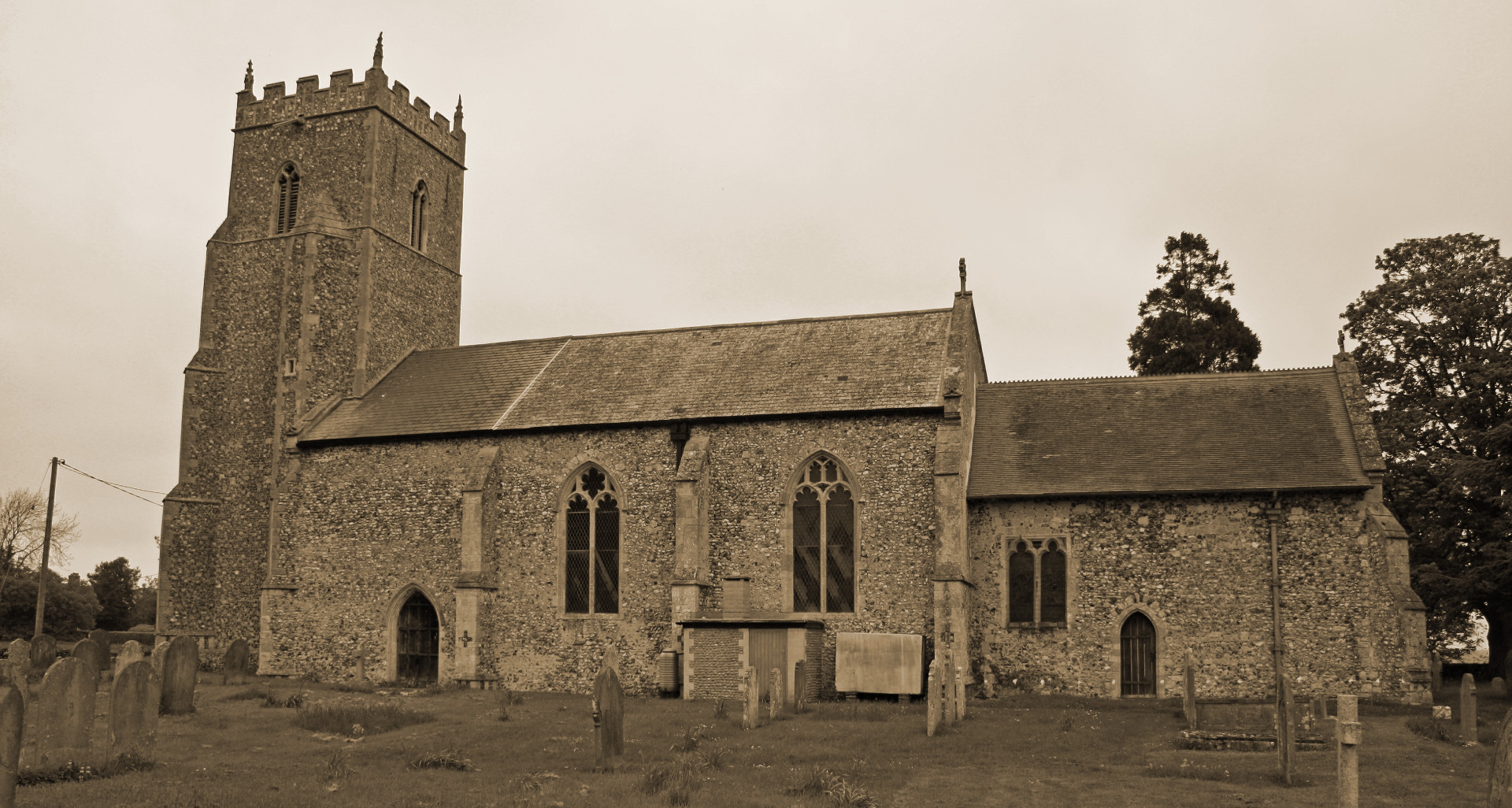Tharston, The Village
by Paul Cattermole
Chapter 9: General Harvey
The strongest influence on the 19th-century topography of the village was Major General Sir Robert John Harvey, who was Lord of the Manor of Tharston at the time of the inclosure of the parish in 1805, and who held the estate until it passed to his son at the time of his death in 1860. General Harvey, who was knighted in 1817 for his services in the Peninsular War was, as his monument in the church records "the principal organ of communication between Field Marshal the Duke of Wellington as Commander in Chief of the Army and the Portuguese troops in the field": he received orders "daily and directly from him, being near his Grace's person in all operations and engagements with the enemy". On his return from the Peninsular Lieut-Col. Harvey (as he then was) set about the reorganisation and reconstruction of properties on his extensive estates with military zeal; and it is possible to follow his military career, through the various battles and engagements in which he was involved, in the names given to his properties in Stoke Holy Cross, Fomcett and Tharston. The defensive lines of Tones Vedras were an immense fortification running from the coast of Portugal across to the River Tagus, behind which the allied armies retired more than once during the course of the war. Ciudad Rodrigo was the scene of a number of encounters with the French, who had been driven back there from the coast, culminating in its capture by General Picton in 1812. Having previously been in charge of the Connaught Rangers when isolated by their forces at El Bodon, Picton was no lover of the French, and his instruction to the Rangers before the attack on Ciudad Rodrigo was: "it is not my intention to spend any powder this evening, we'll do this business with cold steel". The battles of Salamanca (Stoke Holy Cross) and Vittoria (1813) were part of the campaign which drove the French out of Spain, and the decisive battle of Orthes (Stoke Holy Cross) was where the French, having turned to face the Allies, were defeated. General Harvey, whose monument in Tharston Church shows two soldiers in the battle dress of the time of the Peninsular War, was buried in 1860 in the Mausoleum which he had erected in the churchyard in 1855. We are fortunate that much of the Harvey archive survives, including two fascinating estate books in which are plans of the extensive improvements to his properties, and beautiful small watercolours done by Stannard, the Norwich water colourist.
(c) Barbara Cattermole and family, first published in 1993 by Paul Cattermole. No part of this publication may be reproduced, stored in a retrieval system, or transmitted in any form, or by any means, without the prior consent of the author's family.

Page last updated: 11 February 2019

